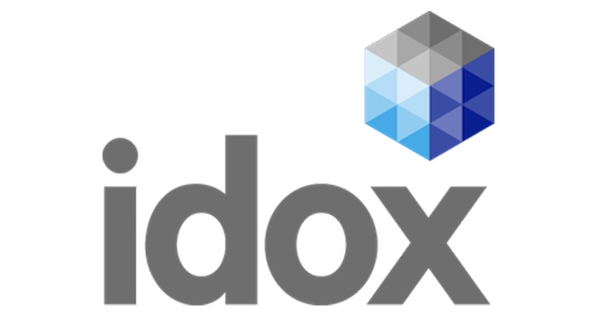Highland Council
Gains efficiency and knowledge with Uniform Cloud
Moving to Uniform in the cloud gave the Council the ability to develop modules, change workflows and expand data resources without any fear of affecting system performance or availability.
Fiona Elder
Systems and Change Team Leader
Highland Council
Overview:
Serving a third of the land area of Scotland, including the most remote and sparsely populated parts of the United Kingdom as well as the city of Inverness, The Highland Council has the 7th highest population of the 32 authorities in Scotland (235,540) while having the lowest population density at 8 persons per square kilometre. Covering an area almost the size of Belgium, the Council’s Planning and Building Standards Department faces not only the challenges associated with a wide and diverse geographic area but also the additional demands created by a rising population, with the number of households increasing by almost 25% since 2001.
With demanding targets from the Scottish Government both for new housing and sustainable development, it is essential that the Council has the agility and efficiency to streamline processes and leverage deep data resources to monitor progress and understand the wider implications for community development.
Challenge:
Highland Council took the lead in Scotland in the use of technology to digitise case management for planning and building standards. Given the incredibly wide geographic area remit, there was a recognition that the Uniform single digitised system providing online applications, reviews and approvals would support far more efficient and streamlined working models. In addition, the drive from the Scottish Planning Project to encourage the adoption of electronic documents and drawings accelerated the move away from paper documents.
With growing recognition of the need to improve operational resilience and minimise the knock-on effects of system downtime on both staff and citizens, Highland Council has been at the vanguard of the move away from on-premise to cloud based systems.
The Council required a proven, cloud-based solution that could support the diverse and expanding requirements of planning and building standards, including development control, enforcements and appeals, as well as provide the information required to understand the broader ramifications of development, from infrastructure requirements to sustainability. In addition, the Council had a strong drive to enable the department to prioritise service delivery to the public, rather than being overwhelmed by the day-to-day complexities associated with managing infrastructure. Adopting Uniform Cloud allowed Highland Council to reduce the burden of infrastructure management, releasing resources to deliver value through first class customer service.
Solution:
Highland Council has been working with Idox and its Uniform software for well over twenty-five years and, in 2015, became first local authority in Scotland to migrate to Uniform in the cloud. Indeed, the planning department was at the forefront of the Council’s strategic drive away from on-premise to hosted systems with the goal to improve resilience and minimise the interruptions to service associated with system downtime.
Fiona Elder, Systems and Change Team Leader, Highland Council, confirms, “In addition to meeting the requirements of the Highland Council in moving away from the existing, outdated and unreliable on-premise infrastructure, by moving to a service hosted and managed by Idox we were able to utilise the most up to date version of the software, as well as potentially minimise costs.” The council also gained the benefits of automatic software updates, cost efficiency and improved data security.
Moving to the cloud:
The migration project had to be completed to a tight deadline, with just nine months to ensure the hosted system was live before the new financial year in April 2015. In addition to the existing 168 system users, Highland Council’s Contaminated Land team was also added to the system during the migration.
As the Council’s first move away from an on-premise solution, the migration to Uniform in the cloud could have been daunting, however, the transition went smoothly. For the end users the process was seamless, with the only change in their experience a move to a single sign on.
The quality of the migration process underlined the strength of the long term Idox relationship. As Fiona Elder says, “We had a voice throughout and always felt valued and listened to, at every stage. The Idox project manager was fantastic and it was a truly collaborative process: we all felt like one team.”
Outcome:
One of the primary objectives of the move to the cloud was to improve resilience and create a far more stable environment. Fiona Elder confirms, “Suddenly there was no fear of the system tipping just before a key meeting because the on-premise infrastructure was overwhelmed, it was just there 100% of the time.”
In addition, the knowledge that upgrades would be automatically handled, the additional support of a proactive service desk and the breadth of Idox’s technical resources significantly reduced the pressure on the in-house team.
The additional confidence provided by the resilience and reliability of the hosted system encouraged Highland Council to explore opportunities for further innovation. Fiona Elder explains, “Moving to Uniform in the cloud gave the Council the ability to develop modules, change workflows and expand data resources without any fear of affecting system performance or availability.” New functionality includes support for the appeals, enforcement and development condition monitoring.
Expanding the usage of Uniform has not only improved the functionality available to staff but also added to the depth and quality of data recorded, providing the Council with a rich resource of additional insight. Highland Council now has seamless access to key information such as the number of affordable houses built in specific areas and progress towards its commitment for affordable housing. The team is working on reporting at a more granular level to monitor their key sustainability goals, to include the number of buildings with photovoltaic panels and how much power is being generated, as well as information on wind generation and the associated community gain.
Fiona Elder says, “The cross-pollination of data, from roads to schools, medical care to infrastructure and environmental waste, is incredibly valuable. It allows us to understand the impact of decisions on the local plan and the targets set for Highland Council by the Scottish Government, as well as highlight the longer-term implications for communities.”
Future:
Looking ahead, Highland Council is keen to make even greater use of cross-discipline data to drive new insights. For example, the Council is working towards creating a link between developer contributions and the relevant planning application, using geospatial technology to provide a map-based view of the financial contribution associated with each application.
The Council has recently invested in the Idox Insights data analytics platform which will provide out-of-the-box dashboards. The initial focus for the development will be the planning department, allowing staff to quickly assess the status of key processes, better manage workloads and provide early insight into potential issues that require remediation. As the council embarks upon a structural transition to break down traditional barriers between departments and improve knowledge sharing across operating areas, the goal is to further develop this solution, using the power and resources of Idox Insights to provide even deeper insight into the planning development plan across the entire Highlands geographic area.
Fiona Elder concludes, “Migrating to Uniform in the cloud has allowed us the freedom of time to develop more modules that give Highland Council both added value and a depth of data that is key to supporting the evolution of communities throughout the Highlands.”






